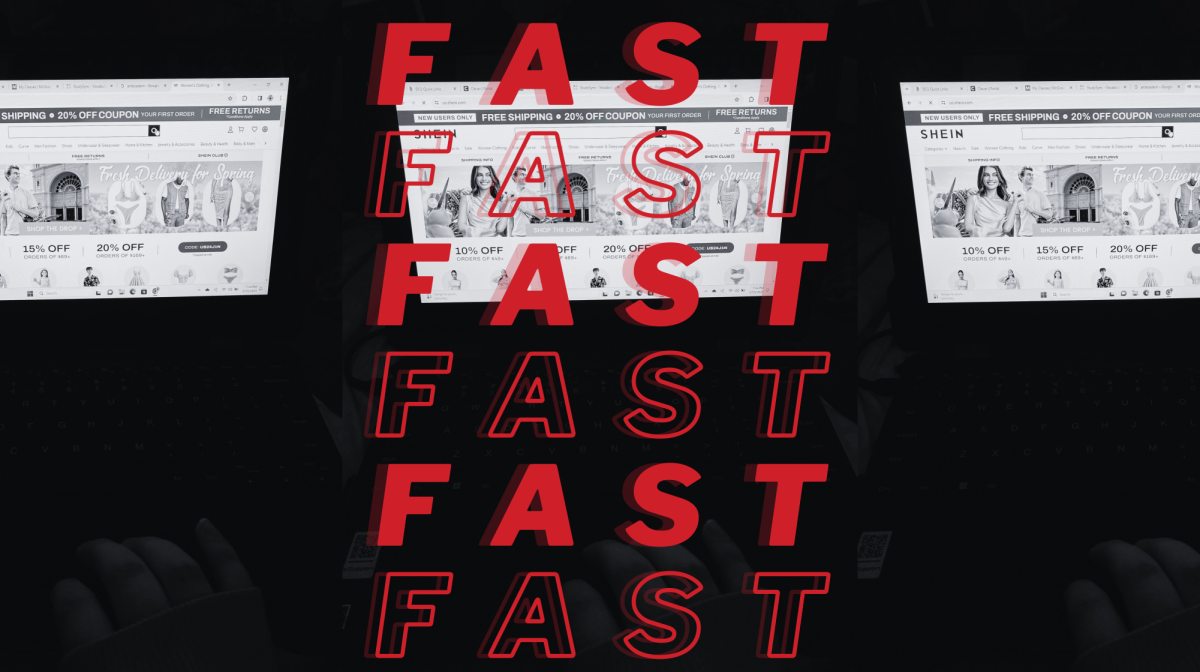Teens from across the globe are enthralled by the amazingly cheap clothes sold on websites such as Shein, Romwe, and Forever 21. With either lots of locations or cheap and quick shipping, these stores go viral for having look-alikes for luxurious items. As modern inflation rates impact prices across America, people are forced to look into cheaper alternatives for many things, like eating out, subscriptions, and, of course, fashion. With rising prices, why wouldn’t you want to save money on materialistic things like clothes?
The concept of ‘fast fashion’ is not new, nor does it seem to be leaving anytime soon. It’s defined as “low-priced but stylish clothing that moves quickly from design to retail stores to meet trends,” according to Adam Hayes at Investopedia. Fast fashion originated in the 1970’s, as more trading exports between America and other regions, specifically Asia, where workers work more and are paid significantly less than Americans for the mass production of cheap clothing. Since then, its popularity has only grown, with brands chasing to keep up with current trends.
Within more recent years, the online store “Shein” captivated many and took younger generations by storm. Shein, based in China, miraculously releases new clothing collections at a rapid pace that’s never been seen before. Not only are the clothes quickly produced, they’re suspiciously cheap, lots of the clothing costing under $10. Shein, like many other brands, also relies on the promotion they receive from the thousands of influencers they sponsor on TikTok, Youtube, Instagram, etc.
Allured by influencer’s hauls of Shein clothing on their TikTok For You Page, Wired’s Vauhini Vara investigated what the secret was behind Shein’s rise to fame. “Meanwhile, the workers stitching the clothes are paid little to labor in exhausting, sometimes dangerous conditions […] an emerging generation of “ultrafast-fashion” companies has come along, and many are doing little, if anything, to adopt better practices. Among them, Shein is by far the biggest,” explained Vara.
These Chinese sweatshops, that accommodate Shein’s 10,000 employees, seem fairly average, but have recently been discovered to house many secrets. The name ‘sweatshop,’ notoriously known for their awful working conditions, as well as poor treatment of employees, is certainly upheld by Shein, with reports of many workers working from 8:30 am to 10:00 or 11:00 pm for 7 days a week. Employees can enjoy one day off per month and are estimated to bring home around $556 per month, about 2 cents per piece of clothing produced that day. Although technically legal under Chinese law, people continue to express concern with the ethics of their practices.
With Shein being the biggest player in the fast fashion game, it may distract shoppers from what other brands are also considered ‘fast fashion.’ Popular brands such as Zara, H&M, and American Eagle, are also active participants. Not all are as controversial as Shein, but all are known to contribute to the downfall of our environment, with fast fashion mass production making up to 10% of the global carbon dioxide emissions. The industry is also responsible for the filling of junkyards and landfills with their cheaply made clothes that has a relatively short lifespan when compared to more sustainable brands.
The lifetime of the clothes may not be impressive, but the presence of the brands themselves look to last forever. The temptation to purchase clothes is hard to resist, even if you’re aware of the consequences of fast fashion. To help positively influence teens, creators like Andrea Cheong speak out against fast fashion.
Cheong described a helpful method of having a ‘Mindful Monday,’ a day to recycle clothes, create a reasonable budget for yourself, and check your clothes, making sure the materials are environmentally friendly, when speaking to Izea, a software that assists up and coming influencers.
With creators swaying their followers to buy from more sustainable brands, and the various online petitions available to sign, there’s hope for a safer and environmentally friendly future for the fashion industry.
Editor’s Note: Cheyanne Cruse, Editor-in-Chief of The Mustang, also contributed to this story.



